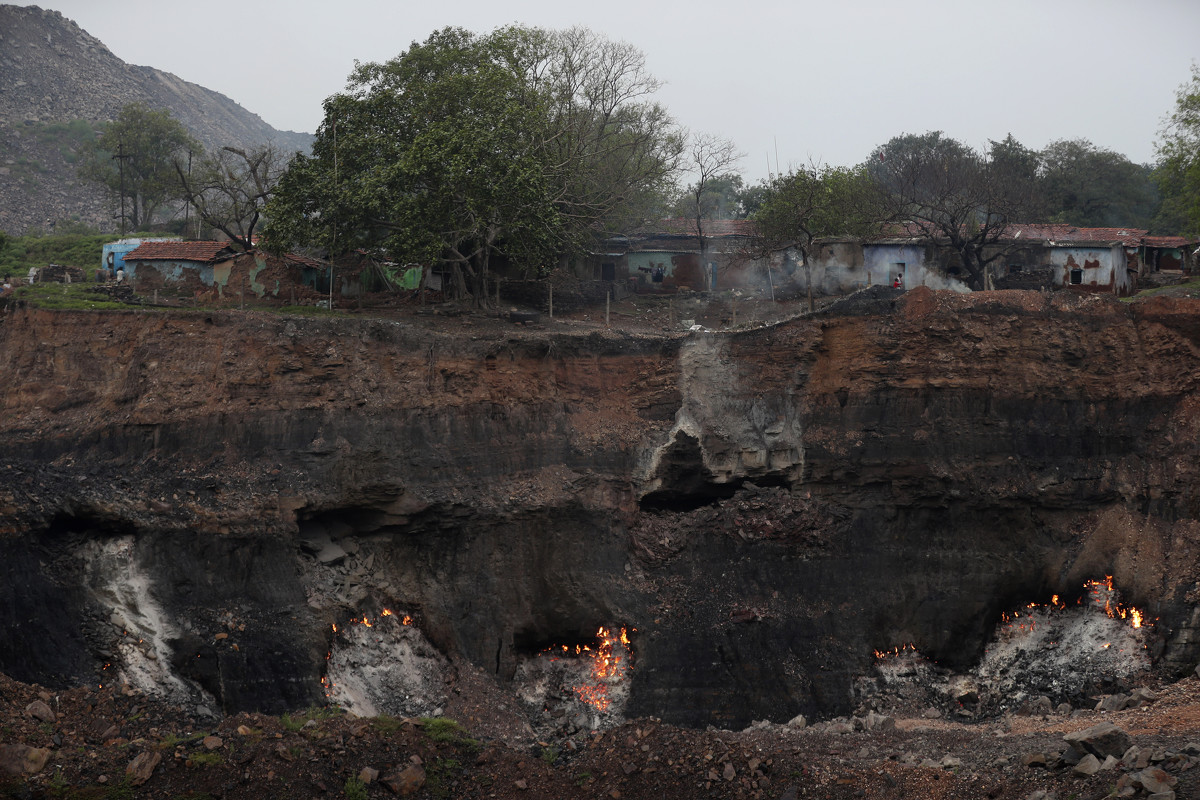
In this Oct. 23, 2019, photo, village houses are seen above the glowing embers of an underground coal fire in the village of Bastakola in Jharia, a remote corner of eastern Jharkhand state, India. The fires started in coal pits in eastern India in 1916. More than a century later, they are still spewing flames and clouds of poisonous fumes into the air, forcing residents to brave sizzling temperatures, deadly sinkholes and toxic gases. (AP Photo/Aijaz Rahi)
JHARIA, India (AP) - The fires started in 1916. More than a century later, coal pits in Jharia, in a remote corner of India's eastern Jharkhand state, continue to spew flames and clouds of poisonous fumes into the air.
Coal is an important contributor to India's growth, supporting its iron and steel industries and generating more than half the country's power. In Jharia, the heart of India's coal industry, the livelihoods of half a million people depend on it.
This, however, comes at a cost.
For the past century, inhabitants have braved sizzling temperatures, deadly sinkholes and toxic gases. The coal fires pose an even greater threat to the lives of those who work in the mines, which cover more than 260 square kilometers (100 square miles).
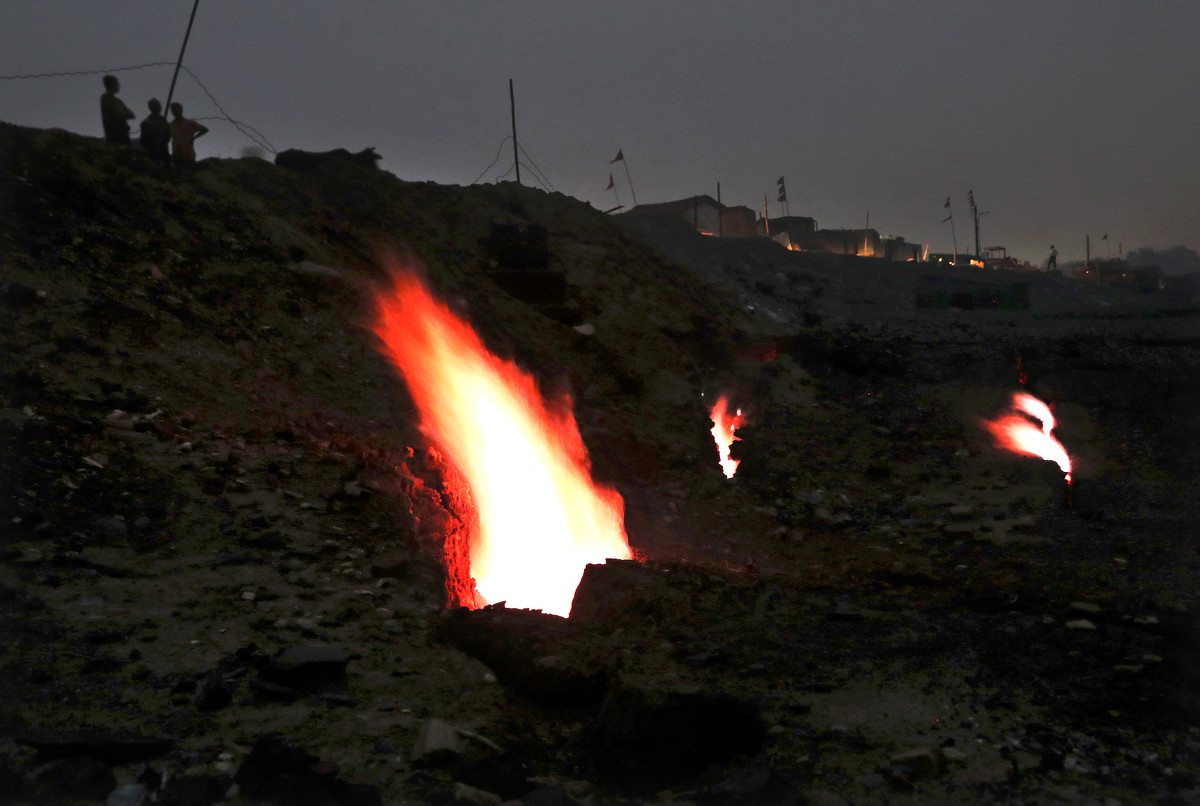
In this Oct. 23, 2019, photo, flames billow out of the fissures on the ground above coal mines in the village of Liloripathra in Jharia, a remote corner of eastern Jharkhand state, India. The fires started in 1916. More than a century later, they are still spewing flames and clouds of poisonous fumes into the air, forcing residents to brave sizzling temperatures, deadly sinkholes and toxic gases. (AP Photo/Aijaz Rahi)
Decades of underground coal mining have hollowed Jharia's land. The collapse of houses and other structures on the surface due to subsidence is increasingly common. Respiratory diseases like tuberculosis, bronchitis and asthma are common. Children have been born deformed, and some people have fallen into the raging fire pits and died.
In 2008, Bharat Coking Coal Ltd., a subsidiary of state-owned Coal India, began a program to relocate almost 53,400 families living in fire-affected areas by 2021. But by 2016, only 4,000 families were relocated.
Over the years, the number of people needing to be resettled has risen to at least 130,000 families.
As the government deadline of 2021 approaches, the lives of people in the fire-affected areas are getting harder.
With few jobs available, many young people work as coal loaders for less than $4 a day or risk their lives scavenging coal.
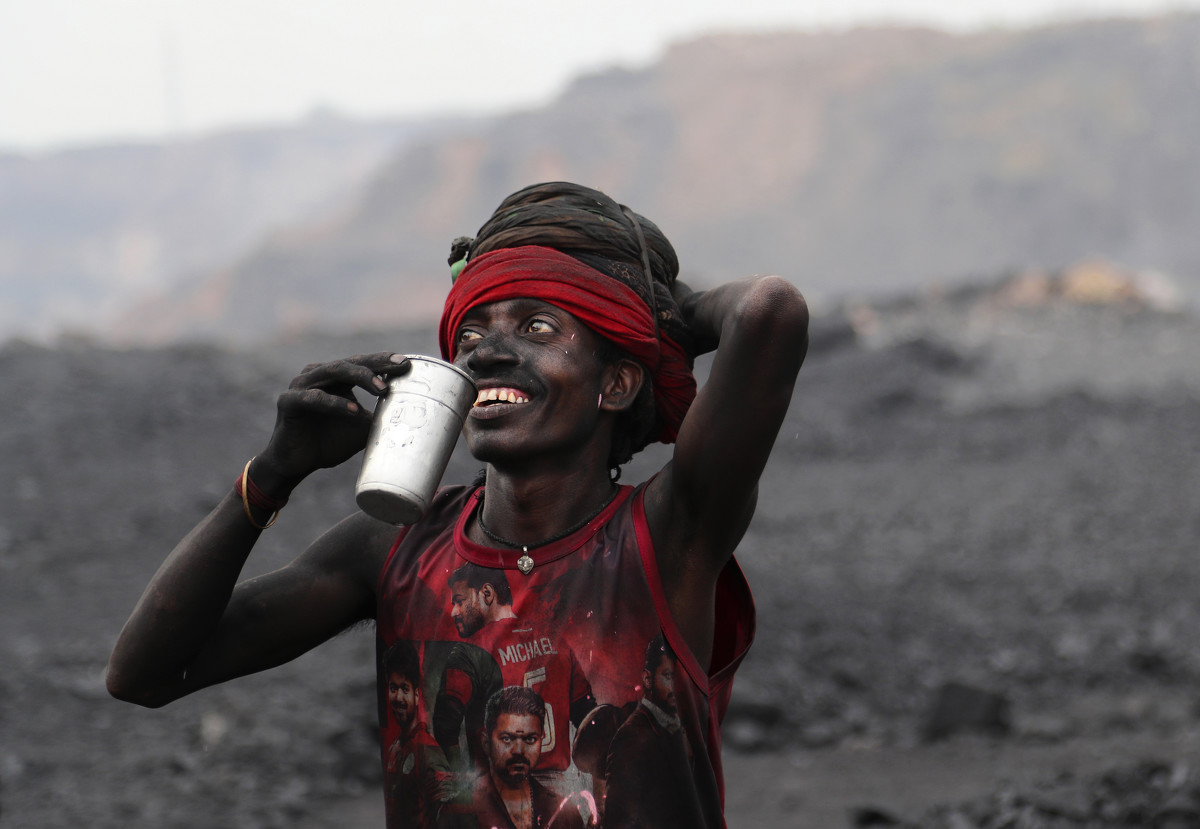
In this Oct. 23, 2019, photo, a laborer smiles as he prepares to drink water during a break from loading coal into trucks for transportation in the village of Godhar in Jharia, a remote corner of eastern Jharkhand state, India. The fires started in coal pits in eastern India in 1916. More than a century later, they are still spewing flames and clouds of poisonous fumes into the air, forcing residents to brave sizzling temperatures, deadly sinkholes and toxic gases. (AP Photo/Aijaz Rahi)

In this Oct. 23, 2019, photo, flames rise out of the fissures on the ground above coal mines in the village of Liloripathra in Jharia, a remote corner of eastern Jharkhand state, India. The fires started in coal pits in eastern India in 1916. More than a century later, they are still spewing flames and clouds of poisonous fumes into the air, forcing residents to brave sizzling temperatures, deadly sinkholes and toxic gases. (AP Photo/Aijaz Rahi)

In this Oct. 23, 2019, photo, laborers fill baskets with coal before loading it into trucks for transportation in the village of Godhar in Jharia,, a remote corner of eastern Jharkhand state, India. The fires started in coal pits in eastern India in 1916. More than a century later, they are still spewing flames and clouds of poisonous fumes into the air, forcing residents to brave sizzling temperatures, deadly sinkholes and toxic gases. (AP Photo/Aijaz Rahi)

In this Oct. 23, 2019, photo, an excavator is used at an open-cast mine in the village of Rajapur in Jharia, a remote corner of eastern Jharkhand state, India. The fires started in coal pits in eastern India in 1916. More than a century later, they are still spewing flames and clouds of poisonous fumes into the air, forcing residents to brave sizzling temperatures, deadly sinkholes and toxic gases. (AP Photo/Aijaz Rahi)
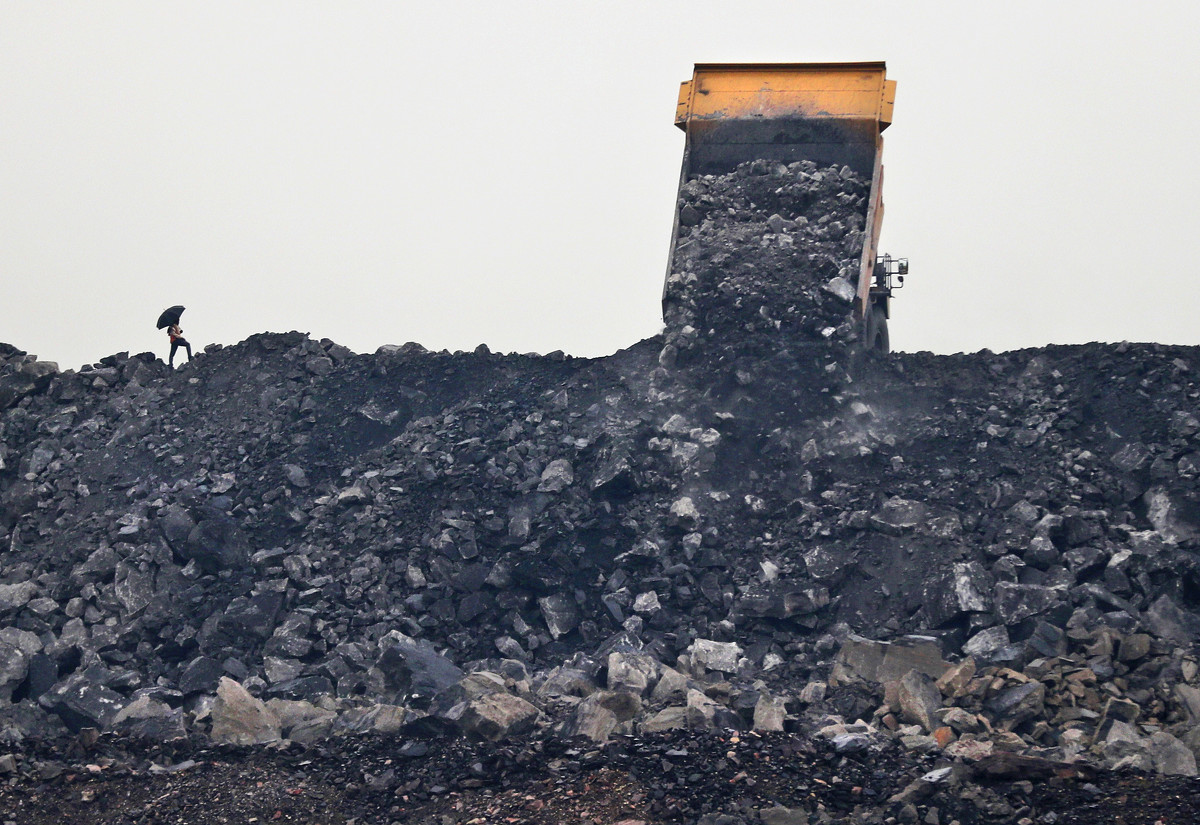
In this Oct. 23, 2019, photo, a laborer keeps watch as coal is unloaded from a truck in the village of Rajapur in Jharia, a remote corner of eastern Jharkhand state, India. The fires started in coal pits in eastern India in 1916. More than a century later, they are still spewing flames and clouds of poisonous fumes into the air, forcing residents to brave sizzling temperatures, deadly sinkholes and toxic gases. (AP Photo/Aijaz Rahi)
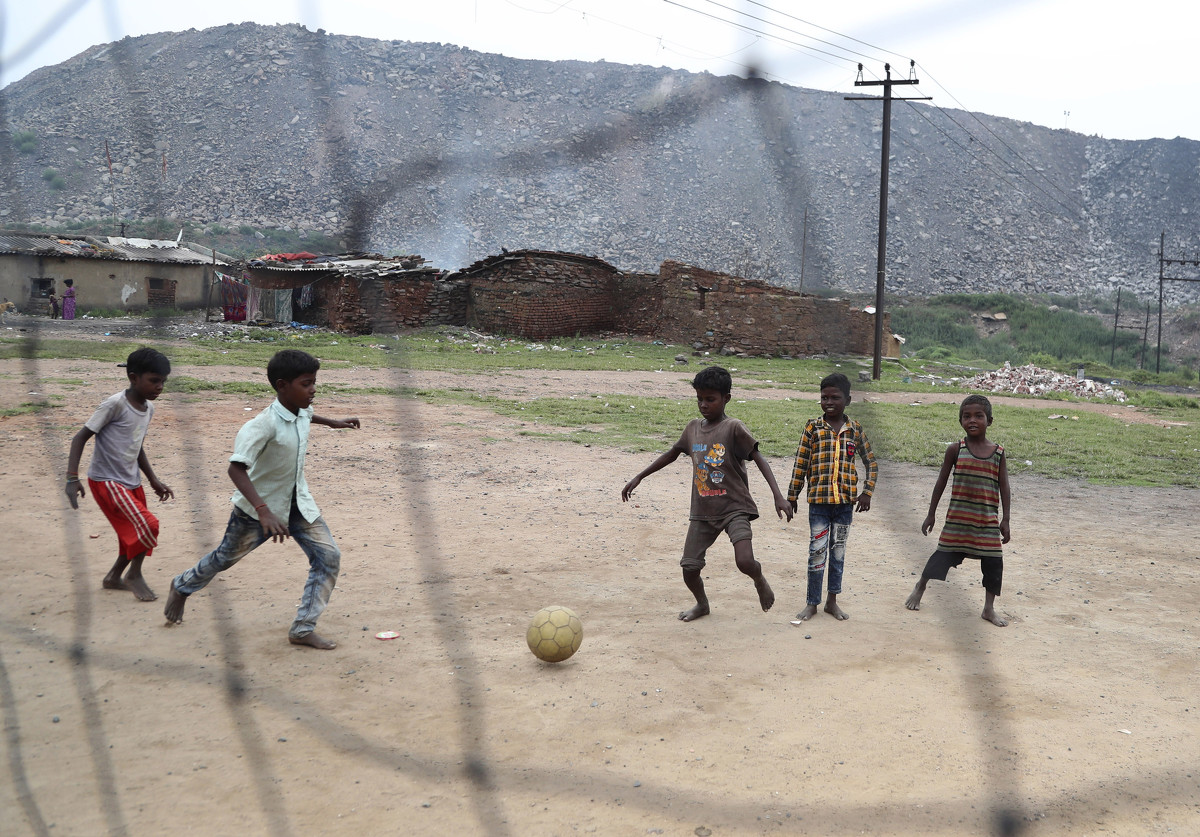
In this Oct. 23, 2019, photo, children of laborers who work in coal fields play a game of soccer in the village of Rajapur in Jharia, a remote corner of eastern Jharkhand state, India. The fires started in coal pits in eastern India in 1916. More than a century later, they are still spewing flames and clouds of poisonous fumes into the air, forcing residents to brave sizzling temperatures, deadly sinkholes and toxic gases. (AP Photo/Aijaz Rahi)
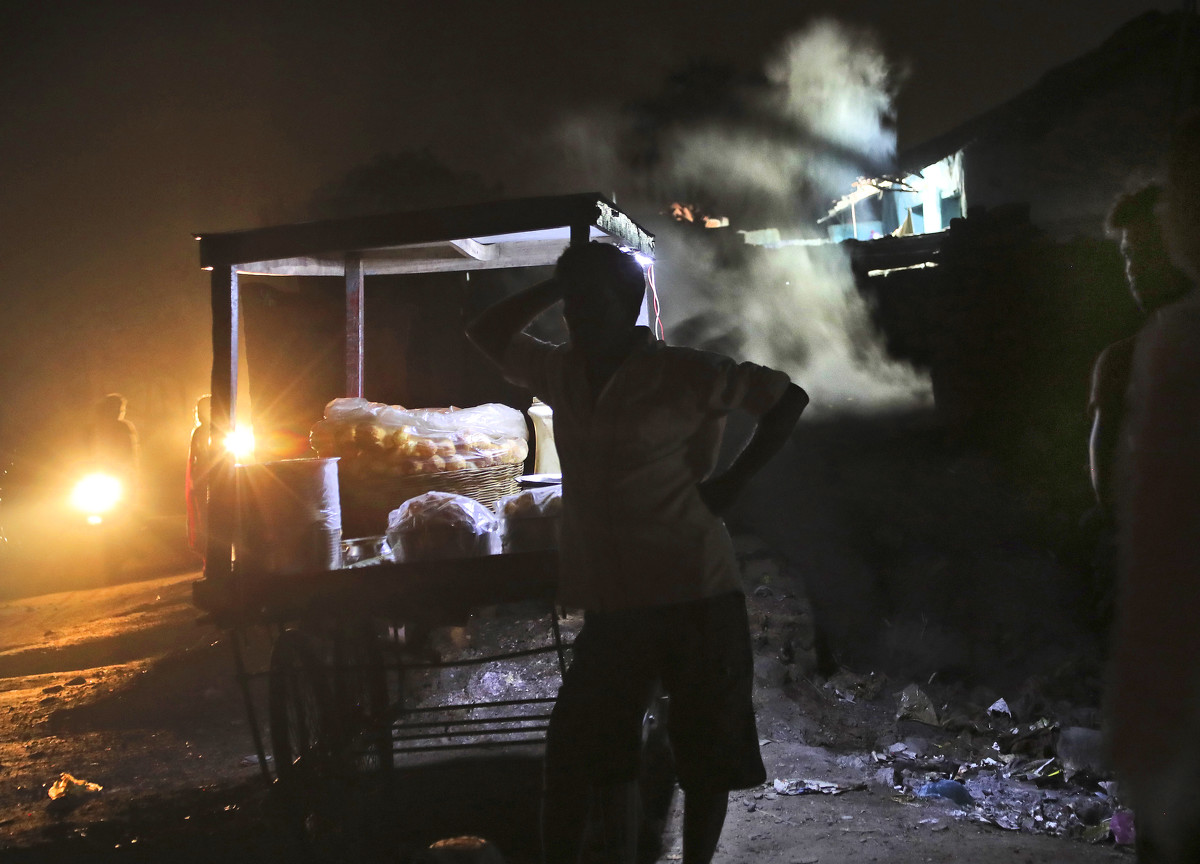
In this Oct. 22, 2019, photo, a vendor stands next to his food cart as smoke rises from a recently collapsed house due to land subsidence in the village of Liloripathra in Jharia, a remote corner of eastern Jharkhand state, India. The fires started in coal pits in eastern India in 1916. More than a century later, they are still spewing flames and clouds of poisonous fumes into the air, forcing residents to brave sizzling temperatures, deadly sinkholes and toxic gases. (AP Photo/Aijaz Rahi)
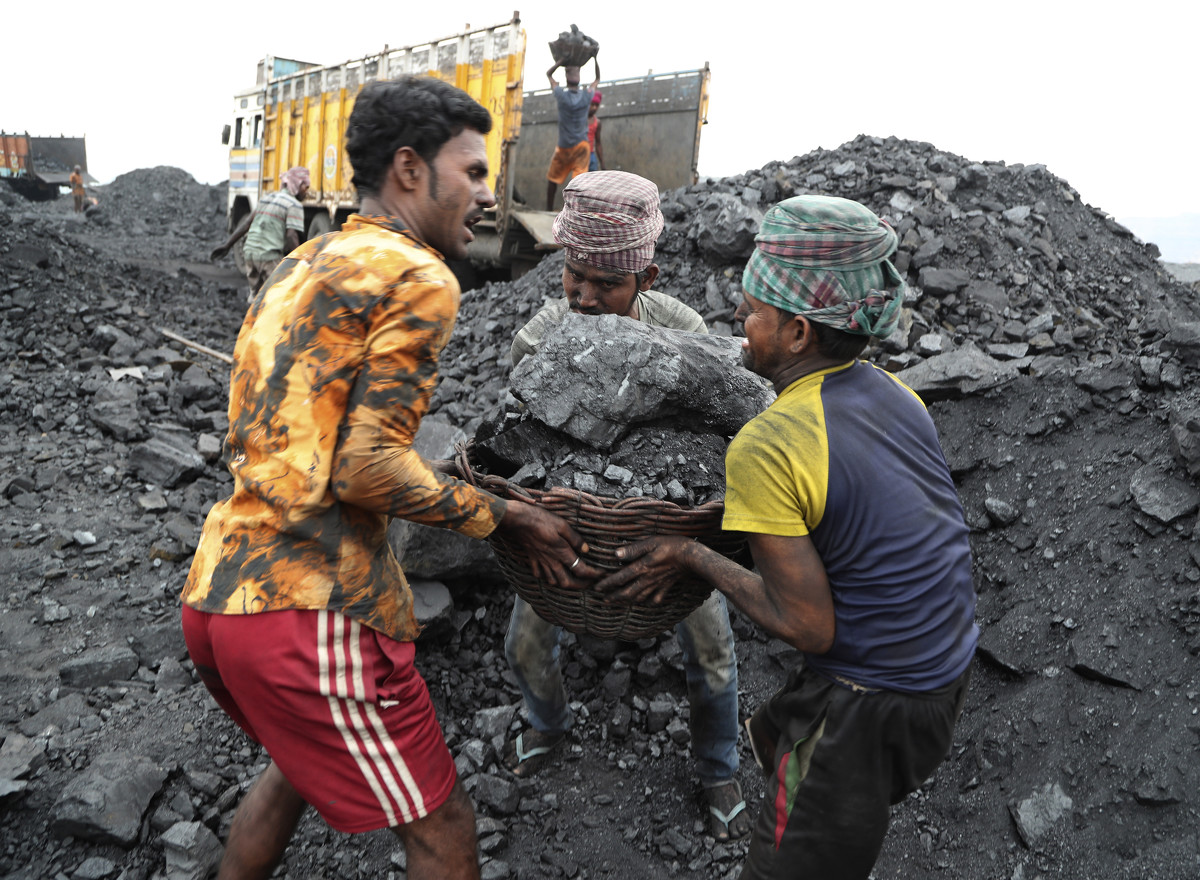
In this Oct. 23, 2019, photo, laborers lift a large basket filled with coal before loading it into a truck for transportation in the village of Godhar in Jharia, a remote corner of eastern Jharkhand state, India. The fires started in coal pits in eastern India in 1916. More than a century later, they are still spewing flames and clouds of poisonous fumes into the air, forcing residents to brave sizzling temperatures, deadly sinkholes and toxic gases. (AP Photo/Aijaz Rahi)

In this Oct. 23, 2019, photo, a laborer sports an anklet as she takes a break from loading coal into trucks for transportation in the village of Godhar in Jharia, a remote corner of eastern Jharkhand state, India. The fires started in coal pits in eastern India in 1916. More than a century later, they are still spewing flames and clouds of poisonous fumes into the air, forcing residents to brave sizzling temperatures, deadly sinkholes and toxic gases. (AP Photo/Aijaz Rahi)
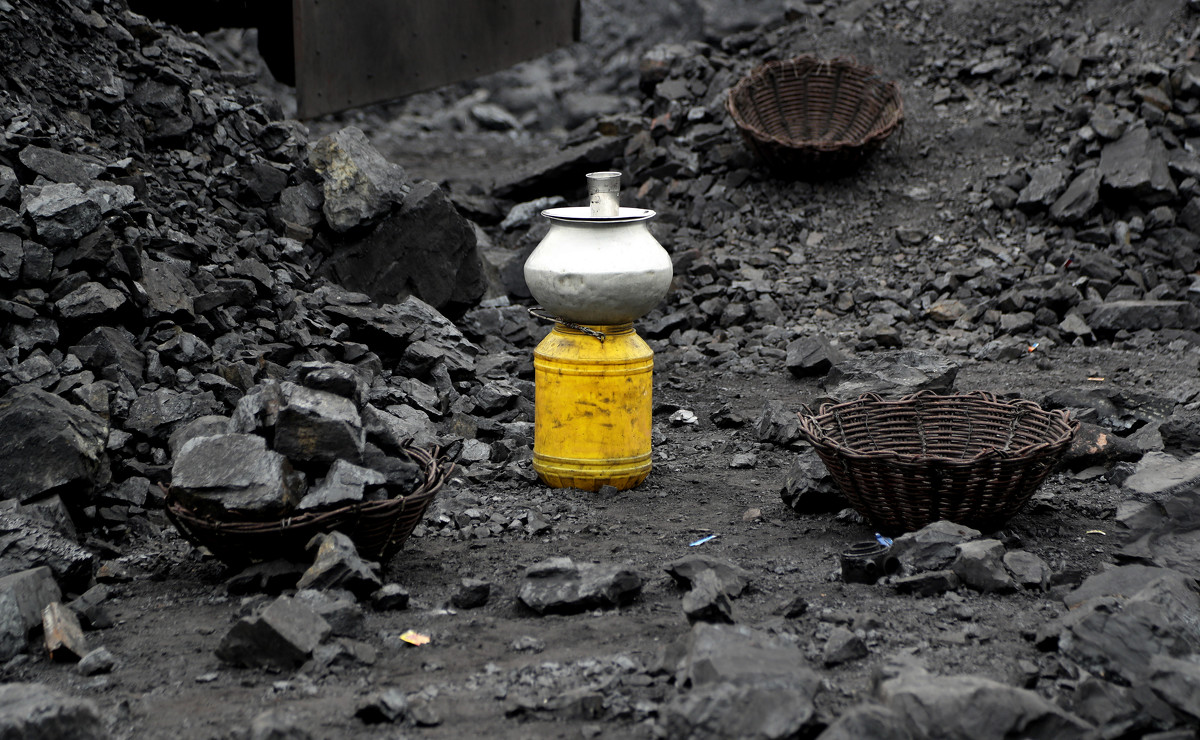
In this Oct. 23, 2019, photo, a metal vessel filled with drinking water stands at a coal loading site in the village of Godhar in Jharia, a remote corner of eastern Jharkhand state, India. The fires started in coal pits in eastern India in 1916. More than a century later, they are still spewing flames and clouds of poisonous fumes into the air, forcing residents to brave sizzling temperatures, deadly sinkholes and toxic gases. (AP Photo/Aijaz Rahi)
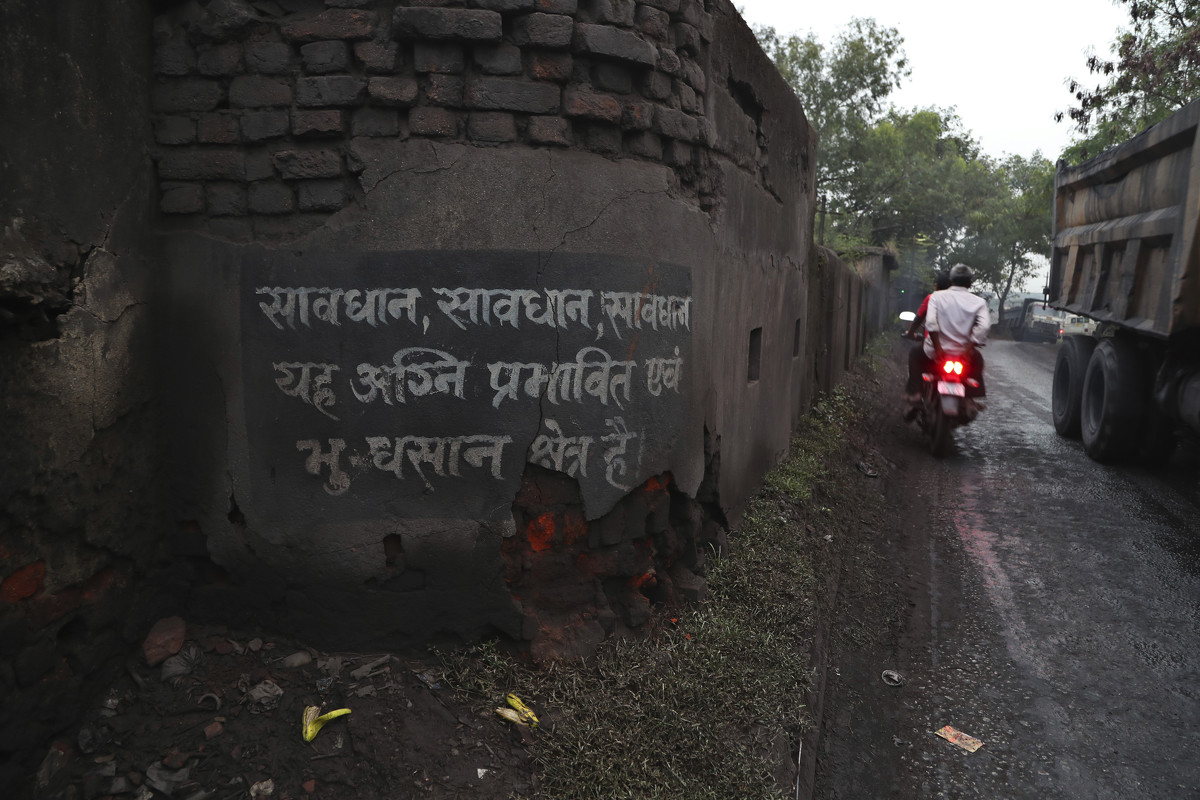
In this Oct. 23, 2019, photo, a motorist rides past a warning painted on a wall informing people about the burning coal mine zone and land subsidence near the village of Rajapur in Jharia, a remote corner of eastern Jharkhand state, India. The fires started in coal pits in eastern India in 1916. More than a century later, they are still spewing flames and clouds of poisonous fumes into the air, forcing residents to brave sizzling temperatures, deadly sinkholes and toxic gases. (AP Photo/Aijaz Rahi)
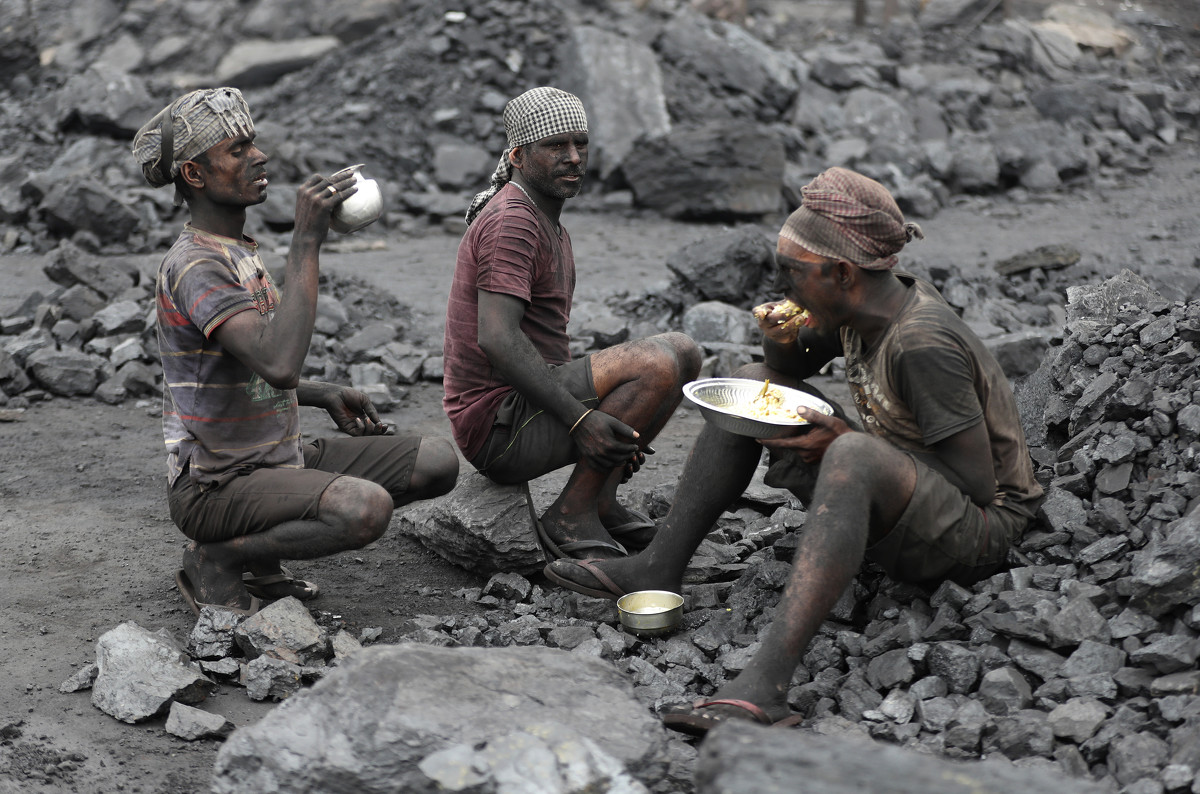
In this Oct. 23, 2019, photo, laborers eat lunch at a coal loading site in the village of Godhar in Jharia, a remote corner of eastern Jharkhand state, India. The fires started in coal pits in eastern India in 1916. More than a century later, they are still spewing flames and clouds of poisonous fumes into the air, forcing residents to brave sizzling temperatures, deadly sinkholes and toxic gases. (AP Photo/Aijaz Rahi)

In this Oct. 23, 2019, photo, a villager paints his house in preparation of Diwali, a Hindu festival, in the village of Bastakola involved in coal mining in Jharia, a remote corner of eastern Jharkhand state, India. Coal is an important contributor to India's growth, supporting its iron and steel industry and generating more than half the country's power. In Jharia, the heart of India's coal industry, the livelihoods of half a million people depend on it. (AP Photo/Aijaz Rahi)
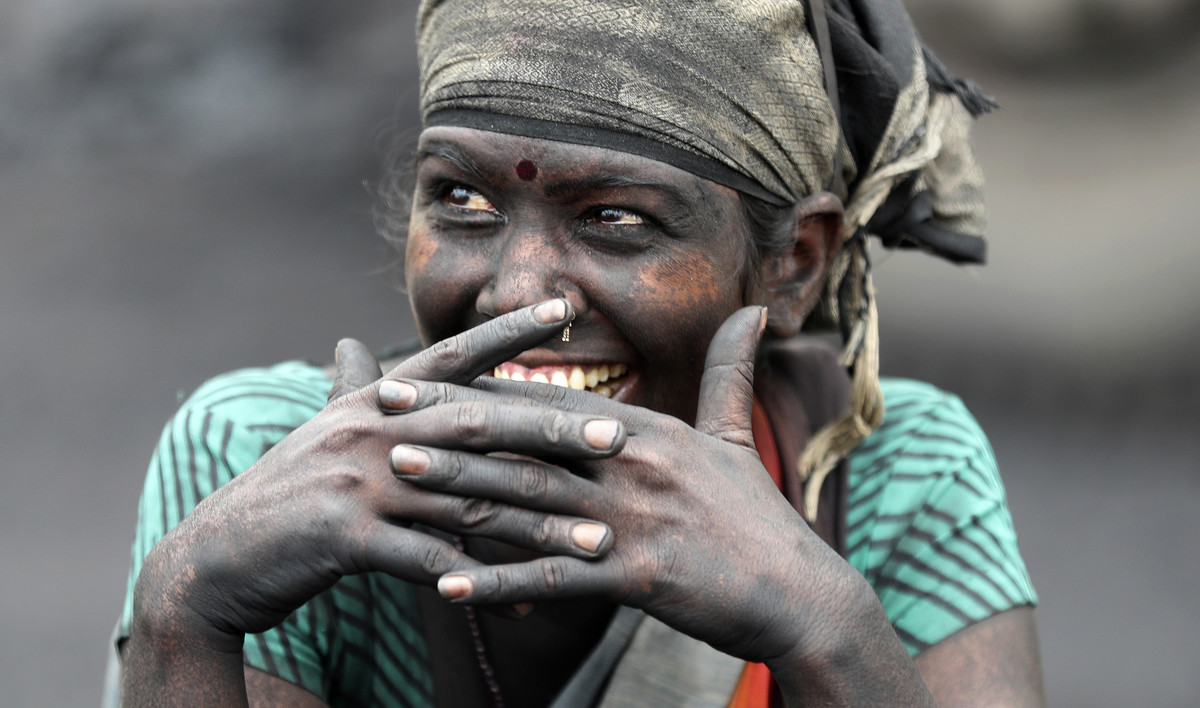
In this Oct. 23, 2019, photo, a laborer smiles as she interacts with fellow laborers during a break from loading coal into trucks for transportation in the village of Godhar in Jharia, a remote corner of eastern Jharkhand state, India. The fires started in coal pits in eastern India in 1916. More than a century later, they are still spewing flames and clouds of poisonous fumes into the air, forcing residents to brave sizzling temperatures, deadly sinkholes and toxic gases. (AP Photo/Aijaz Rahi)
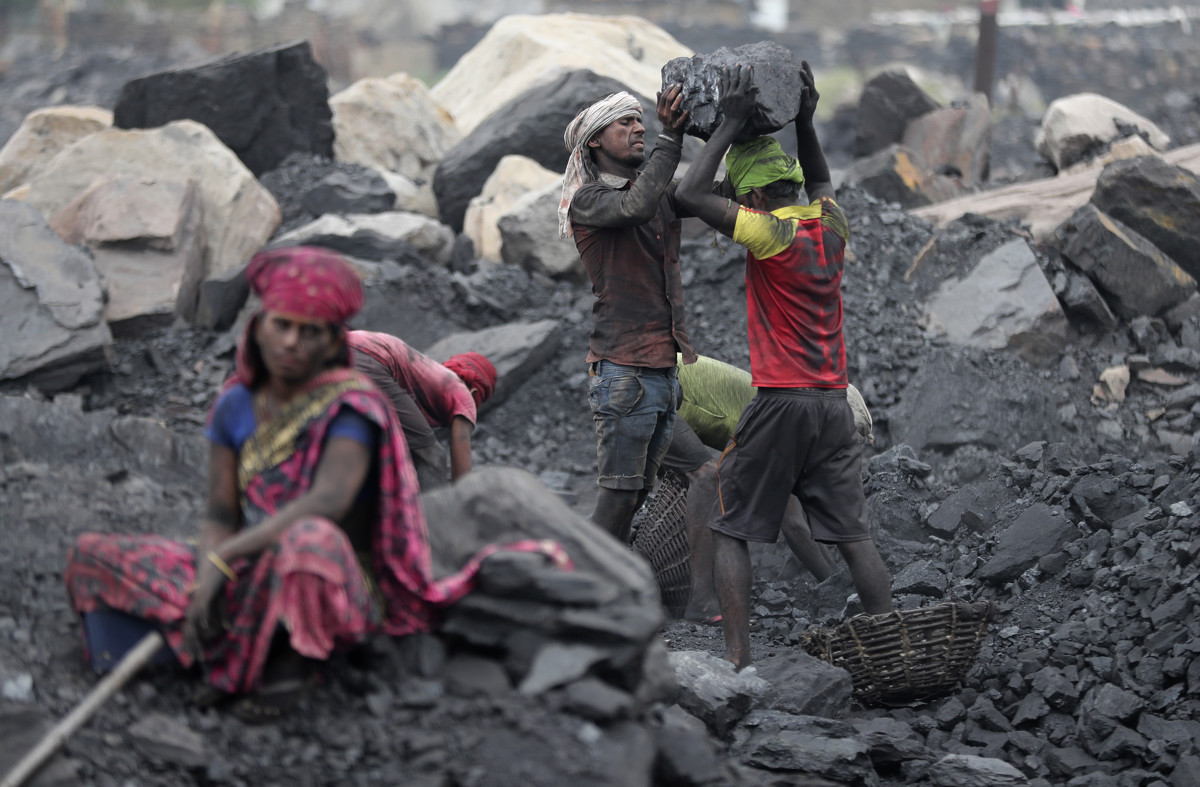
In this Oct. 23, 2019, photo, laborers lift a large piece of coal before loading it onto a truck for transportation in the village of Godhar in Jharia, a remote corner of eastern Jharkhand state, India. The fires started in coal pits in eastern India in 1916. More than a century later, they are still spewing flames and clouds of poisonous fumes into the air, forcing residents to brave sizzling temperatures, deadly sinkholes and toxic gases. (AP Photo/Aijaz Rahi)
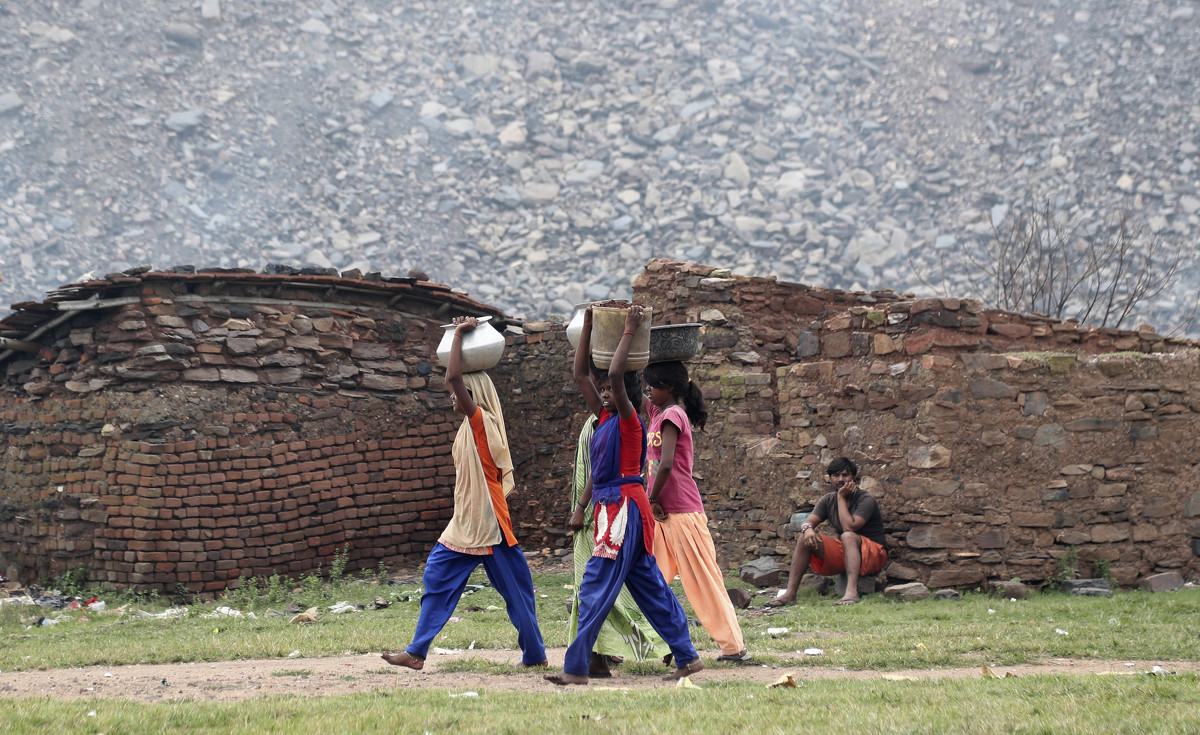
In this Oct. 23, 2019, photo, girls carry vessels filled with drinking water in the village of Rajapur in Jharia, a remote corner of eastern Jharkhand state, India. The fires started in coal pits in eastern India in 1916. More than a century later, they are still spewing flames and clouds of poisonous fumes into the air, forcing residents to brave sizzling temperatures, deadly sinkholes and toxic gases. (AP Photo/Aijaz Rahi)